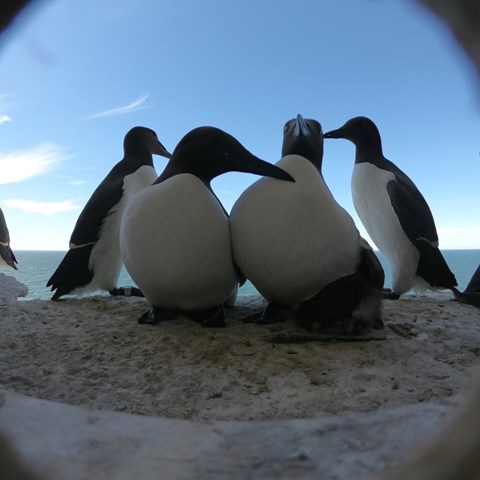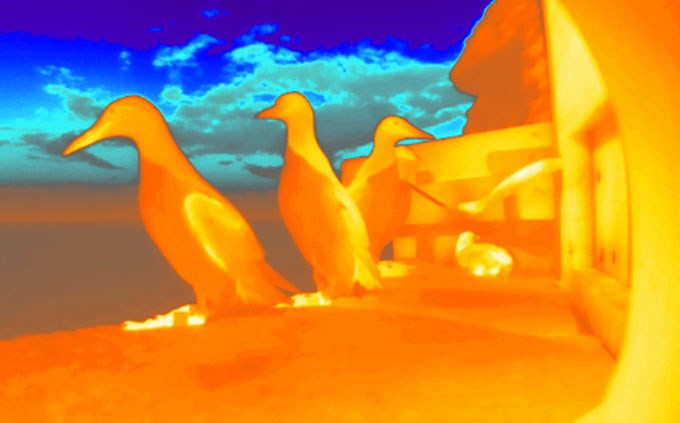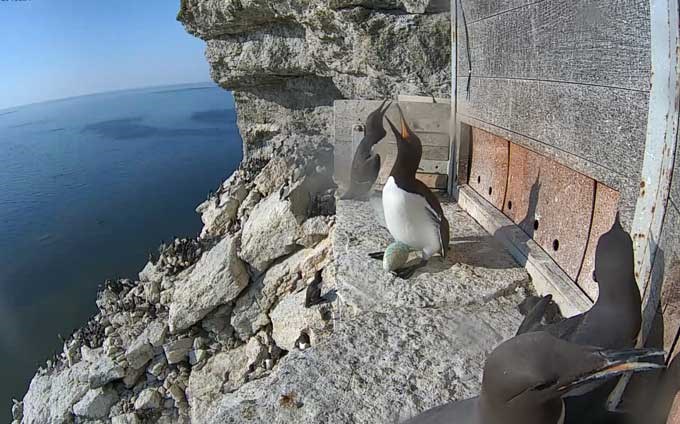More extreme and prolonged heat waves can cause seabirds to lose their eggs and chicks.
Many species of seabirds nest during the hottest summer months, exposed on rocks and beaches. This renders them vulnerable to heat waves. Therefore, researchers have taken a closer look at how high temperatures and sunshine affect the Baltic Sea colonies of Common murres on Stora Karlsö.
Sun and heat stress the birds
The Common murres were strongly affected by high temperatures and sunshine. They start to pant, trying too cool themselves. The birds also move their wings out from their bodies to try to get rid of as much heat as possible.
Many birds leave the rocks to cool off in the sea. On some occasions, very high temperatures were recorded on the rock – over 47 degrees in direct sunlight.
Then many of the adult birds left their eggs and young alone on the rock.
Lone eggs and chicks are vulnerable. The researchers witnessed several occasions when lone chicks died in the heat, or were accidentally kicked off the cliff by other birds. Sometimes the parental birds were so affected by the heat that they accidentally kicked their own egg down off the cliff.
As a consequence of ongoing climate change, heat waves will most likely become an increasing problem, for Common murres in the Baltic Sea as well other seabird species around the world.


